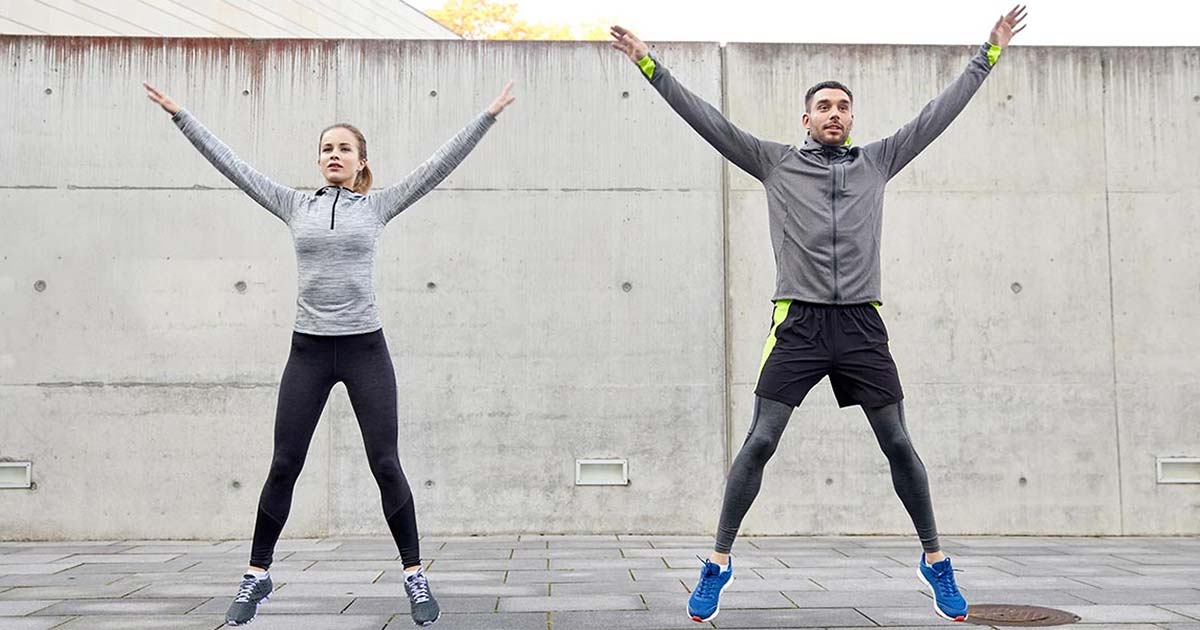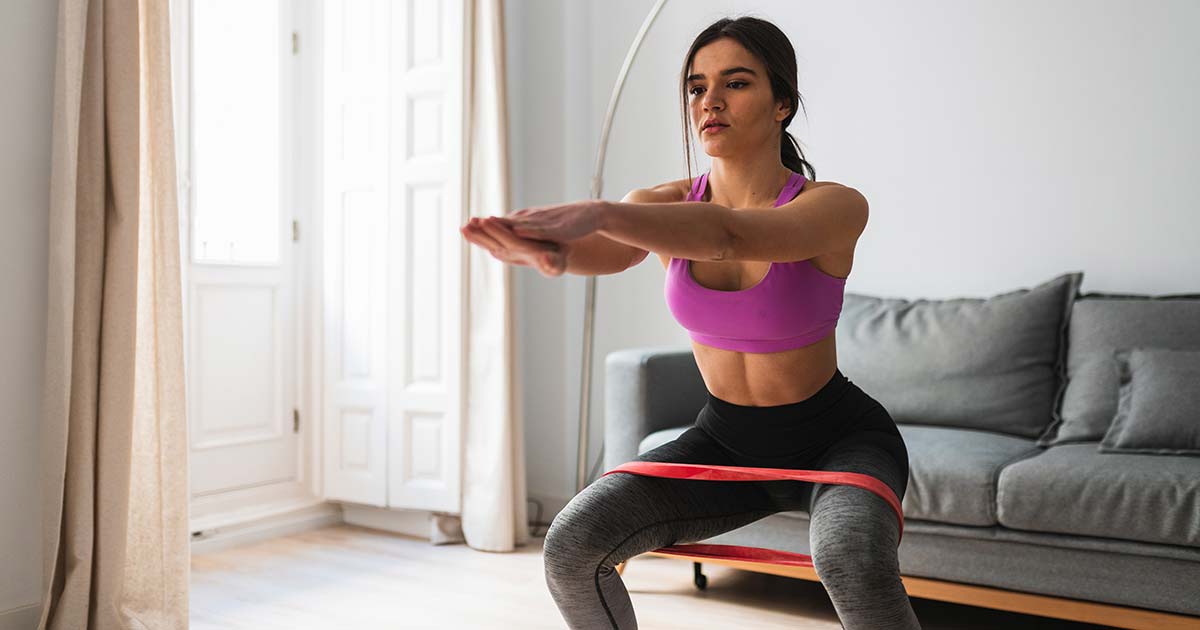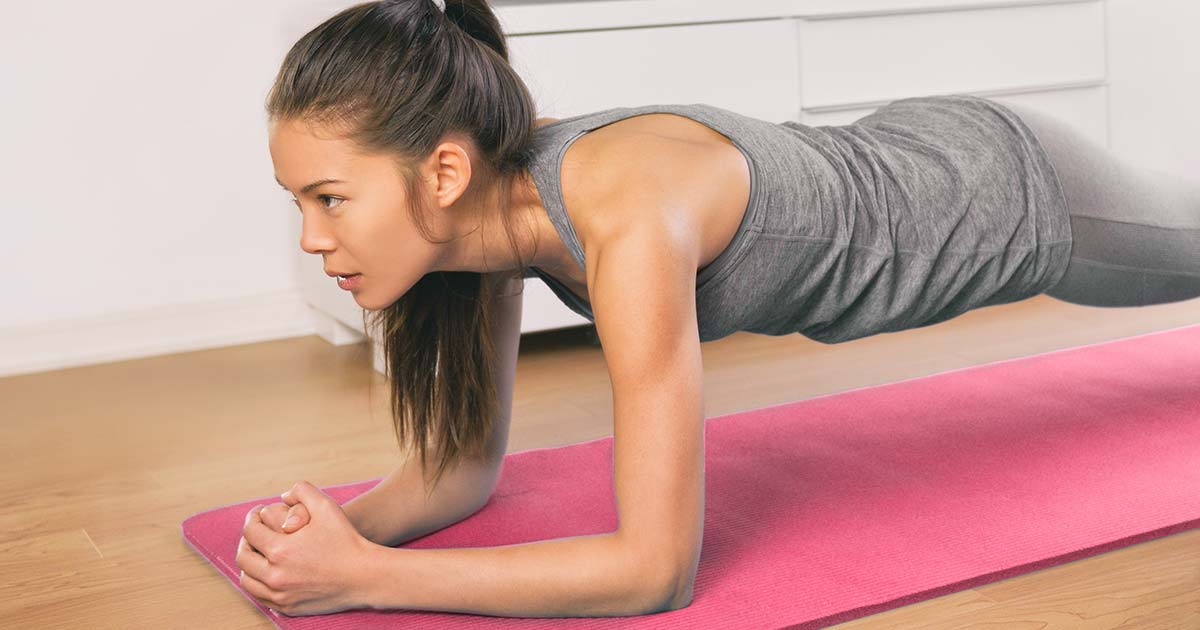
Advice to improve your movement, fitness, and overall health from the #1 in orthopedics in the U.S.
Work Out at Home with Resistance Bands
Ashley Fluger, CSCS, CPT, an exercise physiologist at HSS, provides four resistance band exercises for strengthening the whole body.
Advice to improve your movement, fitness, and overall health from the #1 in orthopedics in the U.S.
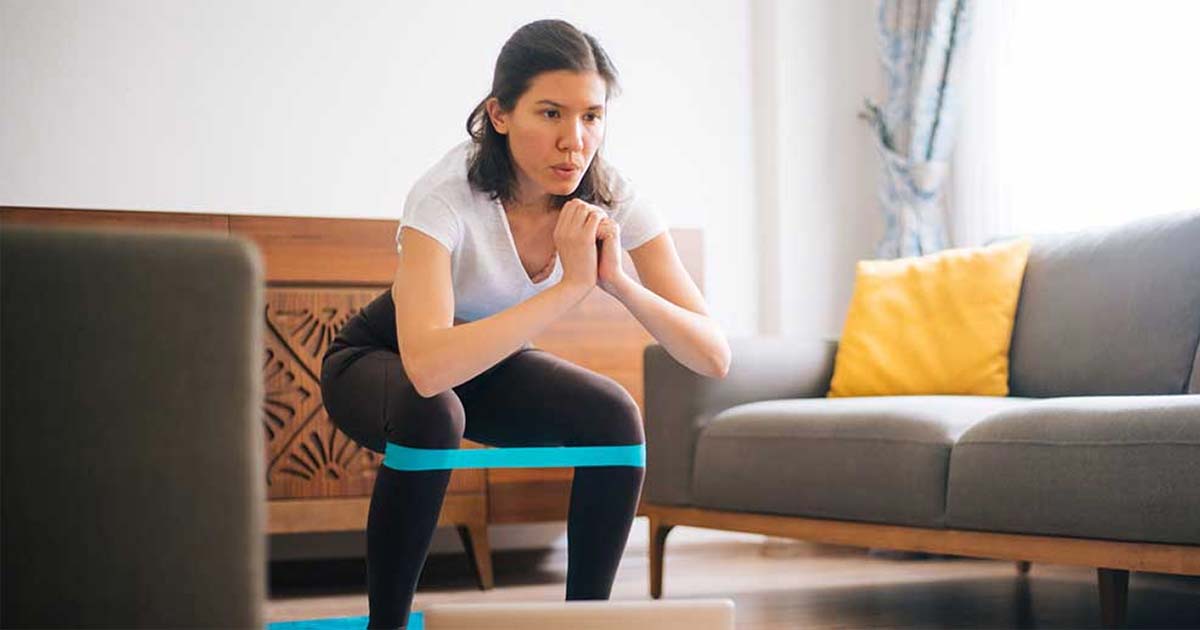
The National Strength and Conditioning Association recommends strength training be performed two to three days per week on non-consecutive days (not back to back). Here are a few full-body strengthening exercises that you can do with your band to get started.
Squat with Resistance Band Above Knees
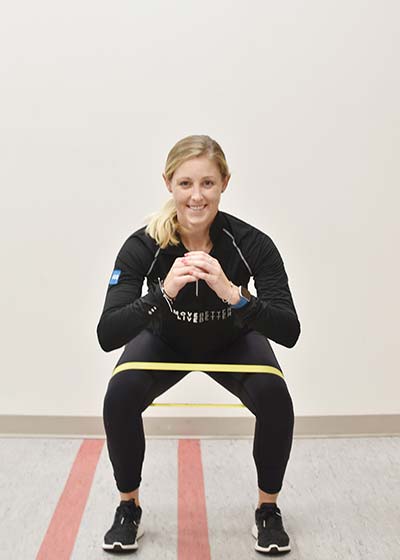
The squat is a big bang-for-your-buck exercise. It is a multi-joint, fundamental movement pattern that can help you build strength and prevent injuries during sports and even daily activities. Adding a resistance band to your squat can help you engage your muscles more effectively and maintain proper form. To perform a squat using a resistance band, push your hips back and press your knees into the band as you symmetrically lower into the squat. Pause, then continue to press out into the band as you stand.
Half-Kneel One-Arm Row with Band
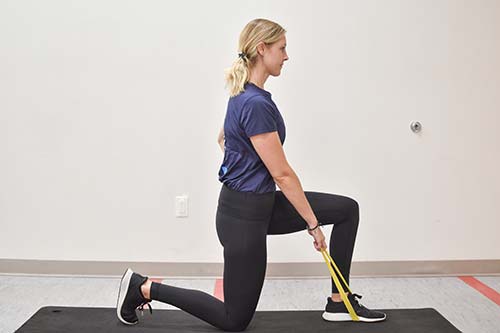
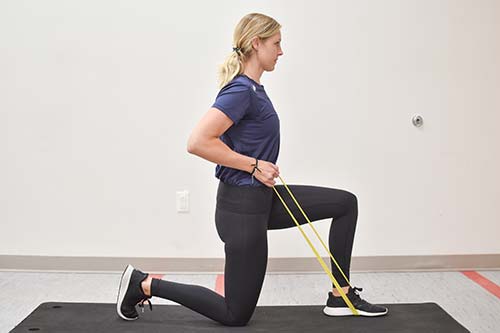
This exercise strengthens your upper body on alternating sides as you simultaneously work on core and hip stability. Begin in a half-kneeling position, placing the band under the arch of your front foot. Grasp the band with a straight arm, then pull your elbow back until your hand is above your thigh and your elbow is bent at a 90-degree angle. Your foot will be your anchor as your arm pulls the band across your body. Keep your core tight and squeeze your glutes to help maintain stability and strengthen your postural muscle groups.
Banded Side Plank with Clamshell
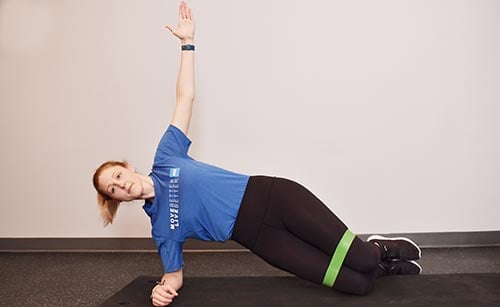
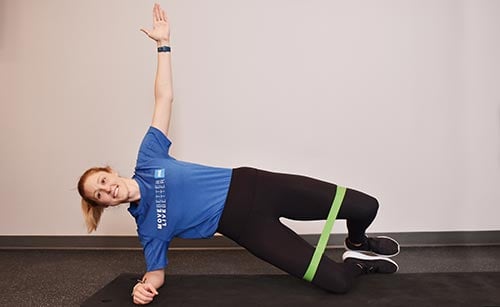
Develop your hip and core strength together in one exercise. Start in a modified side plank position, with your knees stacked on the floor and bent at a 90-degree angle and your upper arm raised. Be sure your top hip doesn’t roll backward as you lift your top knee in a clamshell motion. Remember: Keep your hips high, your core tight and your ribcage down.
Lateral Band Walk

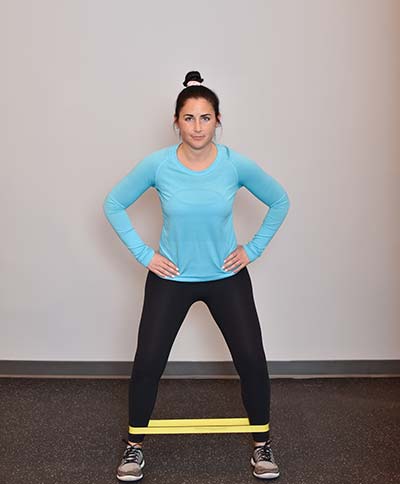
Gluteal muscles are among the strongest and most powerful muscles in the entire body. Strong glute muscles can help stabilize the pelvis and keep the hips and knees in good alignment as you move. However, excessive sitting can make these muscles tight and weak, which is why the lateral band walk is such a great exercise for those who spend a lot of time at their desk. Place the band around your ankles and start walking sideways. Take one big step followed by one little step to bring your feet together. Keep your core tight and chest up.
Congratulations on taking this step to moving better and feeling better. Remember to listen to your body and seek out professional guidance if starting a resistance band program at home feels overwhelming. HSS offers virtual training sessions to support your home workouts. Learn more about virtual training sessions.
Always remember to socially distance and follow all local regulations for safety if you exercise in public or shared spaces.
Published 12/1/2020

